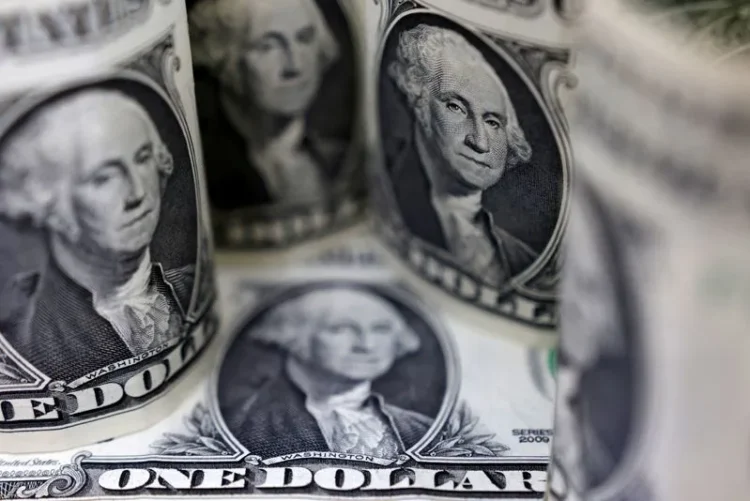Publisher: Maaal International Media Company
License: 465734
Dollar steadies ahead of a string of macro litmus tests
اقرأ المزيد
The dollar held steady on Monday as investors waited warily on news of U.S. trade policy and braced for a week packed with economic data that may give a first glimpse of whether U.S. President Donald Trump’s trade war is hitting home, Reuters reported.
At 143.69 yen and $1.1325 per euro the dollar has, for now, found a footing, while staying on course for its largest monthly fall in nearly 2-1/2 years as Trump has rattled confidence in the dependability of U.S. assets.
It is down more than 4% on both the euro and the yen through April, though bounced at the end of last week on an apparent conciliatory shift in the tone of U.S.-China relations.
Last week, both sides seemed to soften their respective stances, with the Trump administration signalling openness to reducing tariffs and China exempting some imports from its 125% levies.
Yet where Trump insists there has been progress, and that he has spoken with President Xi Jinping, Beijing has denied trade talks are occurring and on Sunday, Treasury Secretary Scott Bessent did not say that tariff talks were under way.
“The next big chapter here will be whether all this volatility has hit real-world decisions – especially in the U.S. jobs market,” said ING’s global head of markets, Chris Turner.
That has investors waiting on April U.S. jobs figures, due on Friday, where jobs growth is still expected, although at a sharply slower pace from a month earlier.
Fed officials including Chair Jerome Powell have indicated they would be willing to cut rates if it becomes clear there are risks to growth. But most appear content to first determine what impact Trump’s tariffs have on real-economy metrics such as inflation and employment before making a move.
FED CAUTION
“Tariffs raise the odds of a Fed response eventually, but perhaps more slowly than markets expect,” Saxo Bank chief investment strategist Charu Chanana said, adding that the central bank will be wary of reacting to rapidly changing developments on the political front.
“So unless the hard data — particularly jobs and consumption — clearly rolls over, the Fed is unlikely to act before July. They need real deterioration to justify a move, not just forecasts or soft indicators,” she said.
The U.S. also releases first-quarter gross domestic product (GDP) data and the Federal Reserve’s favoured inflation gauge, core PCE, this week, while GDP and preliminary inflation figures are also due in Europe.
An Australian inflation reading on Wednesday is seen as unlikely to derail a rate cut that markets have priced as a certainty for next month.
The Australian dollar is trading pretty close to recent highs and hit $0.64 in the Asia afternoon. The New Zealand dollar likewise hovered just shy of $0.60.
Canada goes to the polls on Monday, with the ruling Liberal Party holding a narrow lead in polls and a larger one in online prediction markets. Options markets suggest traders are not bracing for much volatility in currency trade and the Canadian dollar was steady at C$1.3873 per dollar.
The Bank of Japan sets monetary policy on Thursday.
No policy change is expected, though markets will be focused on the outlook and how policymakers are planning to navigate an uncertain economic environment- especially as U.S.-Japan trade talks are expected to touch on the currency.
Japan’s top currency diplomat Atsushi Mimura on Monday denied a report in the Yomiuri newspaper that Bessent had said during a bilateral meeting with Japan that a weak dollar and a strong yen are desirable.








